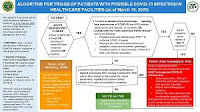Kudos to The Dallas Morning News for this article on the senator's letter urging the head of the FDA to pull Mifeprex (a/k/a mifepristone, RU-486, or "the abortion pill") from the market. The DMN story quotes the senator as saying "Pregnancy is not a life-threatening illness, and the abortion pill does not cure or prevent any disease. Make no mistake, Mifeprex is a dangerous pill." The story explains the background:
As the COVID-19 pandemic limited access to in-person doctor appointments, abortion-rights advocates called for the FDA to alter its risk evaluation strategy for the pill, arguing that the policy, which required a woman be prescribed the pill in person, made it more difficult for a woman to acquire it. A federal judge suspended the rule in July.
The article offers this lesson in basic reproductive biology:
Pregnancy can be especially deadly to Black and American Indian women. From 2011 to 2016, there were 42.4 deaths per 100,000 live births for Black non-Hispanic women and 30.4 deaths per 100,000 live births for American Indian and Alaskan Native non-Hispanic women.
The CDC reported in [2019] that since Mifeprex’s approval in 2000, there were 24 recorded maternal deaths associated with the drug.
The article ends with this great Twitter quote from Democratic congressional candidate (TX-4) Russell Foster: "If you dont have a uterus, you shouldn't have a say in a womans healthcare. You lack basic knowledge. Viagra doesnt prevent any disease but I'm sure you have a full bottle at home. Please stay out of women's healthcare decisions unless you want them to start legislating mens."
































